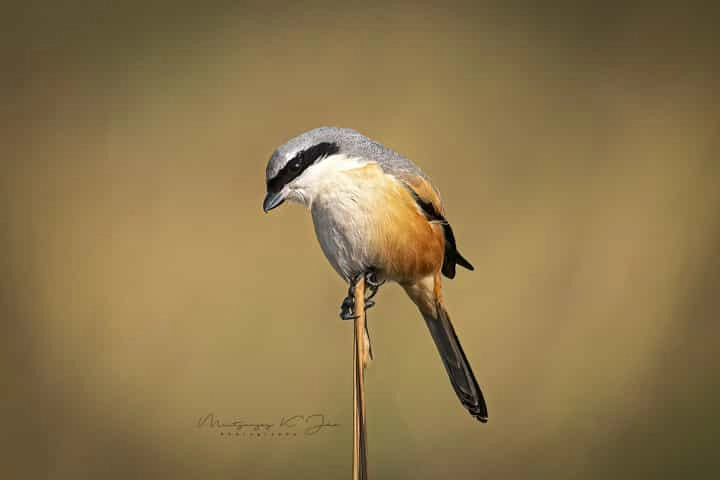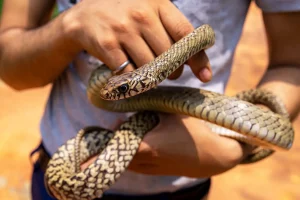“It is a butcher…do not get deceived by its look,” said my photographer friend.
A beautiful bird with a dark black stripe across its eyes, it resembles Zorro, the hero with the black mask.
The bird with the mask of Zorro in front of my tele lens is called the Long-tailed Shrike. It is also known as Rufous-backed Shrike.
This myna or bulbul-sized bird is petite and attractively coloured, with a reddish-brown back, grey neck, white underparts and a black tail with white lining. A closer look, however, would probably diminish the cuteness factor a great deal. For starters the black bandit mask that runs across the shrike’s eyes, giving the little bird a decidedly sinister look.

Also, the bird has a strong hooked beak like raptors, with a vicious downward curve. This beak is clearly not meant for nibbling forest berries on a nippy morning. It is designed for tearing flesh, as the Shrike is a complete carnivore.
No wonder, the long-tailed shrikes (Lanius schach) are called “butcher birds” and their family name is Lanius, which is “butcher” in Latin. According to experts, Shrikes think and act like raptors, though nature has not endowed them with all the attributes of one.
According to experts, shrikes don’t have strong talons like a hawk, and so don’t have a way to grip their prey as they tear it into bite-size chunks. They solve this problem with a butcher-like strategy. These birds carry their prey to the nearest thorny plant, and impale the poor creature on one of the thorns and rip it into smaller pieces with their powerful beaks.
But what about the mask?
The shrike has evolved a dark feather “mask”, or eye-stripe, which scientists believe helps reduce the sun’s glare when the bird is hunting or foraging. Remember, football players wear “eye-black” to reduce sunlight and stadium light glare in the same way.

Researchers in Israel were able to test this theory with masked shrikes by whitening the black feathers surrounding the birds’ eyes. The birds faced away from the sun when hunting, and were not as successful in catching their prey. The researchers hypothesized that the hunting shrikes cast shadows when they were facing away from the sun, and thus alerted the prey about their presence.
“It means, hunting success was significantly reduced in birds with white-painted masks compared with individuals with black-painted and natural masks. We conclude that the facial mask of the “Masked Shrike” helps overcome the glare of the sun, perhaps allows better identification of prey from their larger shadow, and allows the shrike to approach the prey without alerting it to the stealth attack,” say the researchers.
Other species of bird like bee-eaters, wear masks but for ornamental reasons.
According to some researchers, the name Shrike comes from an Old English word that means “shriek” referring to the songbird's harsh call. But these avians are capable of vocal mimicry, which include calls of many species including lapwings, cuckoos, puppies and squirrels in their songs.
Thirty species of shrikes have been identified worldwide and in India, we find about 10 species. They are listed as “common” birds but one does not see them very often.
Also Read: Black-hooded Oriole – One of 100 Birds to See Before You Die




















